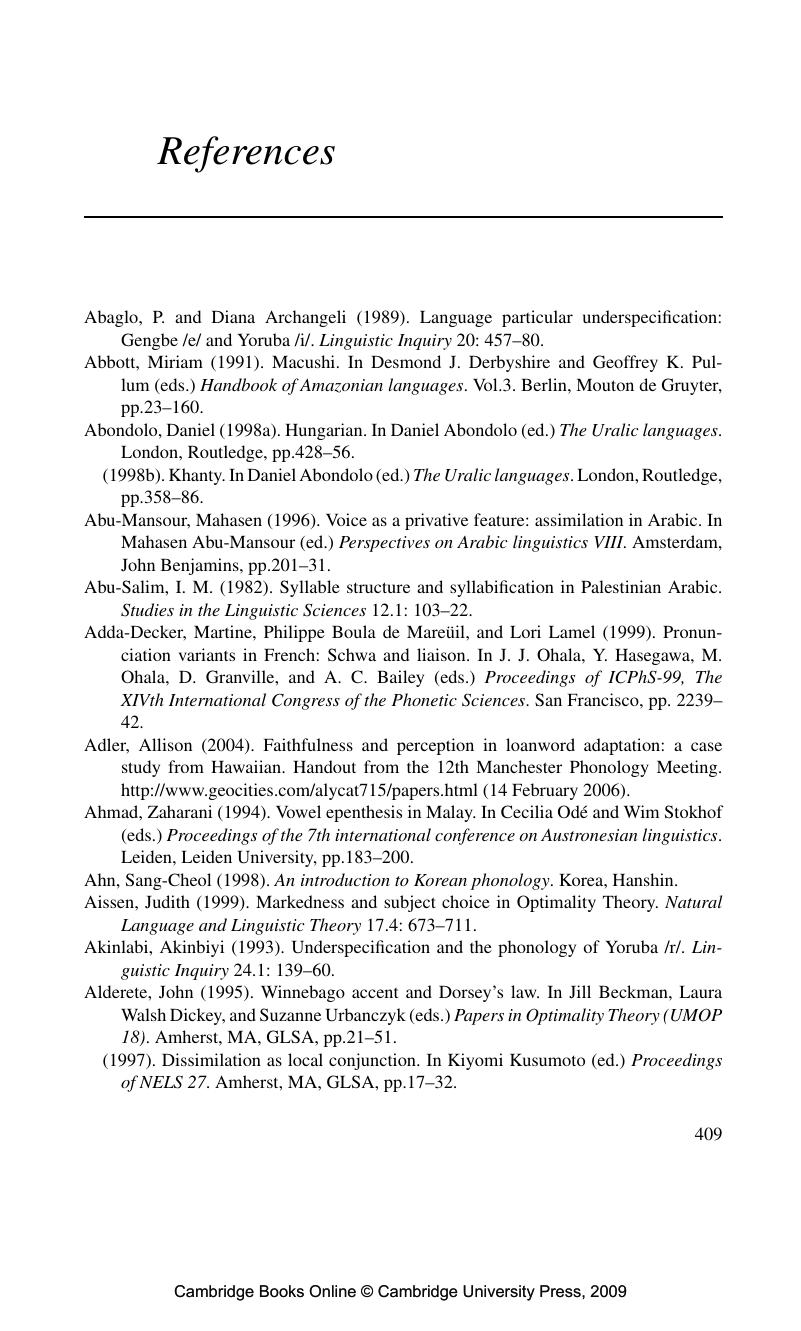Book contents
- Frontmatter
- Contents
- Preface
- Acknowledgments
- Symbols and abbreviations
- 1 What is markedness?
- 2 Theory
- 3 Markedness reduction
- 4 Preservation of the Marked
- 5 Conflation in reduction
- 6 Markedness conflation in preservation
- 7 Markedness conflict: vowels
- 8 Predictions and alternatives
- 9 Conclusions
- References
- Subject index
- Language index
- References
References
Published online by Cambridge University Press: 22 September 2009
- Frontmatter
- Contents
- Preface
- Acknowledgments
- Symbols and abbreviations
- 1 What is markedness?
- 2 Theory
- 3 Markedness reduction
- 4 Preservation of the Marked
- 5 Conflation in reduction
- 6 Markedness conflation in preservation
- 7 Markedness conflict: vowels
- 8 Predictions and alternatives
- 9 Conclusions
- References
- Subject index
- Language index
- References
Summary

- Type
- Chapter
- Information
- MarkednessReduction and Preservation in Phonology, pp. 409 - 439Publisher: Cambridge University PressPrint publication year: 2006



